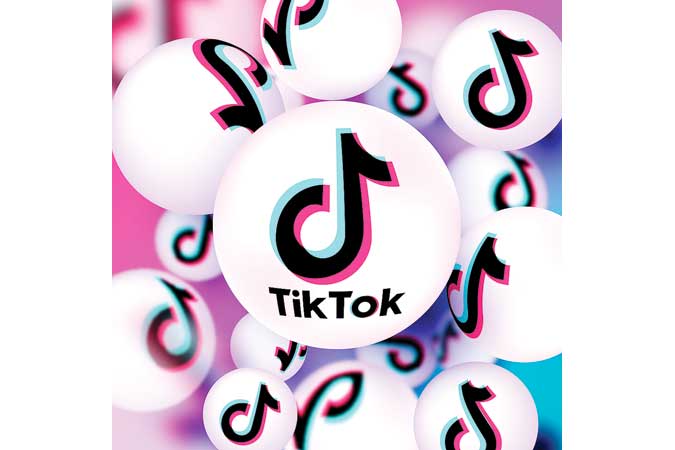
Numbers Don’t Lie
By Andrew J. Masigan

TikTok is taking the world by storm and even challenging Facebook, Instagram, and YouTube for social media dominance. Not only is it an engaging platform to pass time, TikTok has proven to be a potent tool for product marketing, image building and driving sales.
For those unaware, TikTok, known as Douyin in China, is a video sharing/social networking service owned by Chinese company, ByteDance. The platform is used to make a variety of short-form videos whose genres span dance, comedy, political commentary, educational clips, entertainment, and personal blogs, among others. Each video has a duration from 15 seconds to one minute.
Between 2019 and 2020, TikTok increased its user base by 582%. In February 2019, TikTok reached its first billion downloads and it took them just eight months to gain another half-billion users. As of April 2020, the app surpassed the two billion mark. It may be approaching 3 billion by now. No surprise, the Chinese app recently beat YouTube and Instagram in the Apple App Store in terms of number of downloads.
TikTok provides the tools and platform for amateur video makers (called “creators”) to publish their work for an international audience. Creators upload their works on the platform with an eye towards garnering engagements. Engagements come in the form of “likes,” comments, and/or followers — the more engagement, the more gravitas a creator carries. This gravitas can be monetized by way of product endorsements, collaborations, and brand ambassadorships. This, on top of royalties from TikTok itself which is about $.02 to $.04 per thousand views, depending on the territory.
The 15-second to one-minute videos are designed to be fast paced and extremely engaging. Unlike Facebook, TikTok algorithms feed you the types of videos you engage with the most and where you spend the most time in. In other words, you are only fed the videos that suit your interest. This is what makes it addicting. Studies show that TikTok users spend an average of 81 minutes per day on the App which they open 16 times a day, on average. Users spend four times more time on TikTok than they do on Instagram. TikTok is presently available in some 155 countries and territories.
Sixty-two percent TikTok users are aged 10 to 29 years old. This age demographic represents the largest market for consumer goods. They are highly impressionable and particularly conscious about trends. This makes TikTok an ideal marketing platform for companies engaged in fashion (apparel, accessories, and footwear), cosmetics, gadgets, trendy food products, and lifestyle products. The caveat, however, is that in this segment, trends change rapidly and product preferences tend to be fickle.
Marketers of consumer goods can penetrate the world of TikTok by collaborating with creators. Creators are selected by how the tonality, mood, and theme of their videos match the values of the product or brand. Of course, number of followers weighs heavy on the equation too. Authenticity sells, hence, a video has a higher probability of going viral if there is a match between the creator’s personality and that of the brand.
The cost to collaborate depends on the creator’s number of followers, his/her reputation, and country of origin. As a point of reference, a local advertising agency quoted a fee of P75,000 per video for a Filipino A-list celebrity to feature a product on his TikTok. Some A-listers in the US, Europe, and South Korea charge an upfront fee plus a royalty computed as a percentage of gross revenues for the duration of the campaign.
Creators prefer long term relationships rather than one-off engagements. Hence, it is more cost efficient to negotiate “brand ambassadorships” with creators whereby they feature the product or brand not only on TikTok but also on their other social media platforms. In the Philippines, it is common to include personal appearances at special events as well. In a brand ambassadorship arrangement, however, the brand’s image becomes intertwined with the image of the creator himself. This is why an eject clause is often included in the contract in case of untoward events.
Apart from fair compensation, what matters to TikTok creators is the artistic freedom to conceptualize and create their videos. When working with a creator, companies are advised not to be over-prescriptive nor should they bind the creator with strict guidelines. The less parameters, the better. Creators must be given the license to create since the most effective videos — those that go viral — are those that appear organic.
American TikTok consultants Mavrck, advises creators and product promoters to make TikTok’s algorithm work to your advantage. Captions, keywords, and hashtags play an import role in how often and to whom the video is to be channeled to. Interestingly, the choice of background music and/or sound effects determines frequency of exposure too. Trending music get higher exposure.
Sound shouldn’t be an afterthought, says Mavrck. Unlike other social media platforms, music and sound are inherent to the TikTok experience. Mavrck advises brand promoters to work with creators to consider the best approach for sounds. This can drastically change how the brand is perceived.
TikTok is all about starting and promulgating trends. Mavrck advises that videos be made to pique emotions towards social causes. Starting and promulgating a movement helps to increase engagements.
Startup brands that have been the early adaptors of TikTok have grown large enough to challenge mainstream brands in their local markets. For instance, Vessi Shoes of Canada achieved instant fame and tremendous sales growth on the back of its videos that give away free shoes for singing duets. International restaurant chain, Chipotle Mexican Grill, achieved brand awareness and sales growth for their “cool” testimonials and cooking demonstrations. Elf Cosmetics of California is now a hot brand after they commissioned a song specifically for a TikTok campaign. The song, which takes inspiration from Kash Doll’s hit “Ice Me Out” and is called “Eyes Lips Face.” These new brands are challenging traditional market leaders like Vans shoes, McDonalds, and L’Oreal, all of whom are now scrambling to get a piece of the TikTok market. Early adaptors in the Philippines include Pocofino Coffee, Belo Clinics, and Shopee.
Times have changed and so have the platforms that influence our consumer behavior. In just five years, TikTok has become an effective marketing platform that challenges not only Facebook and Instagram but TV and radio itself. It should be a part of every consumer brand’s marketing strategy, especially those that target the youth.
Andrew J. Masigan is an economist
Facebook @AndrewJ. Masigan
Twitter @aj_masigan